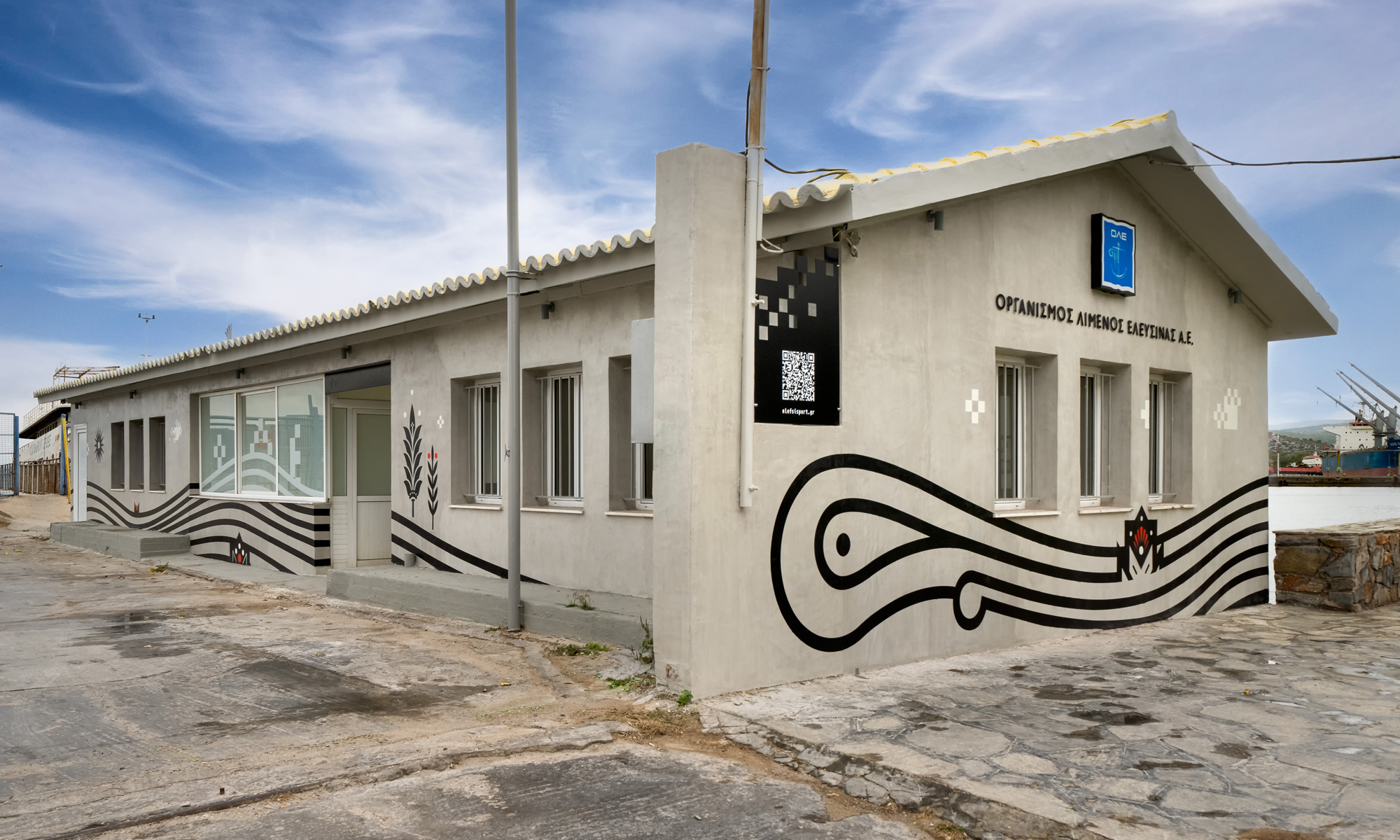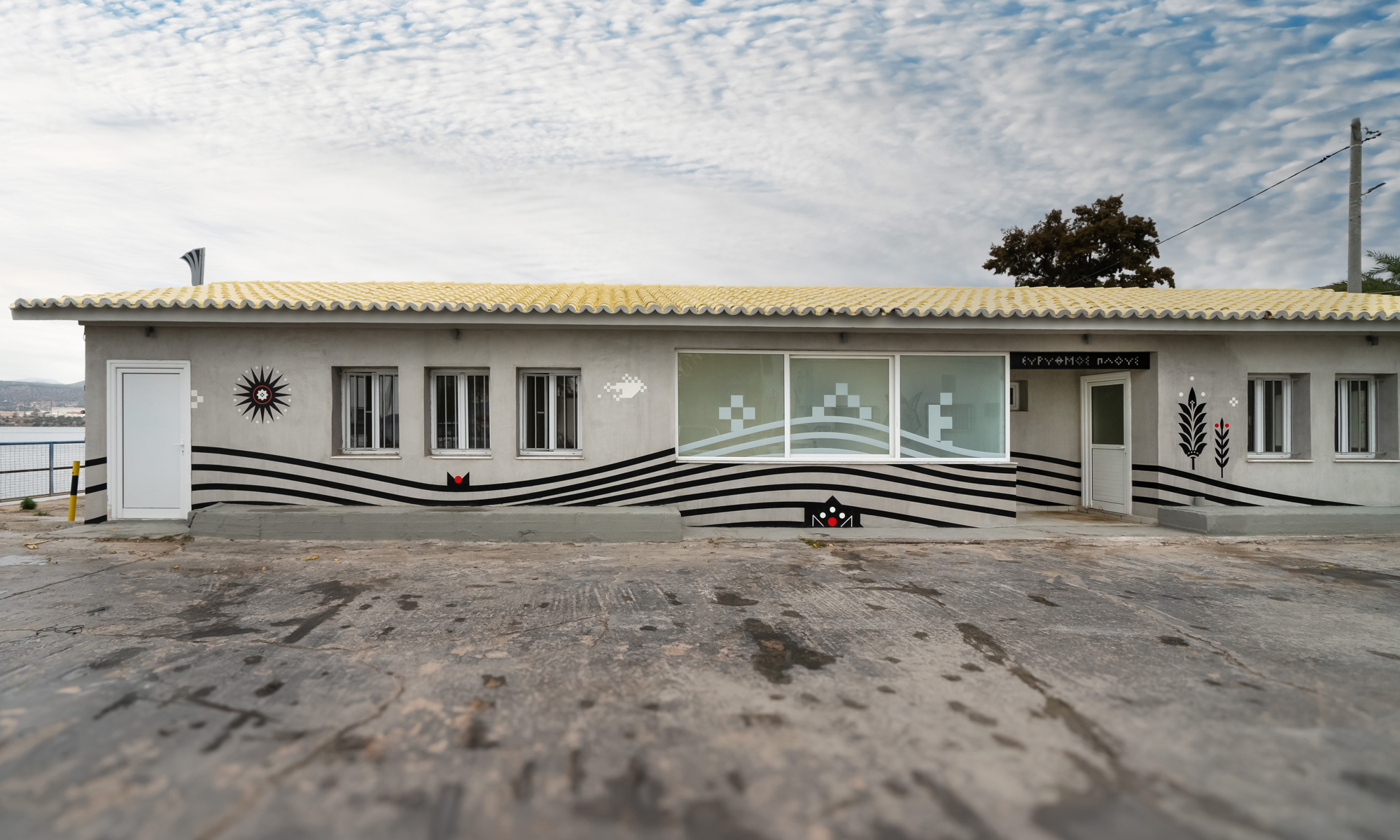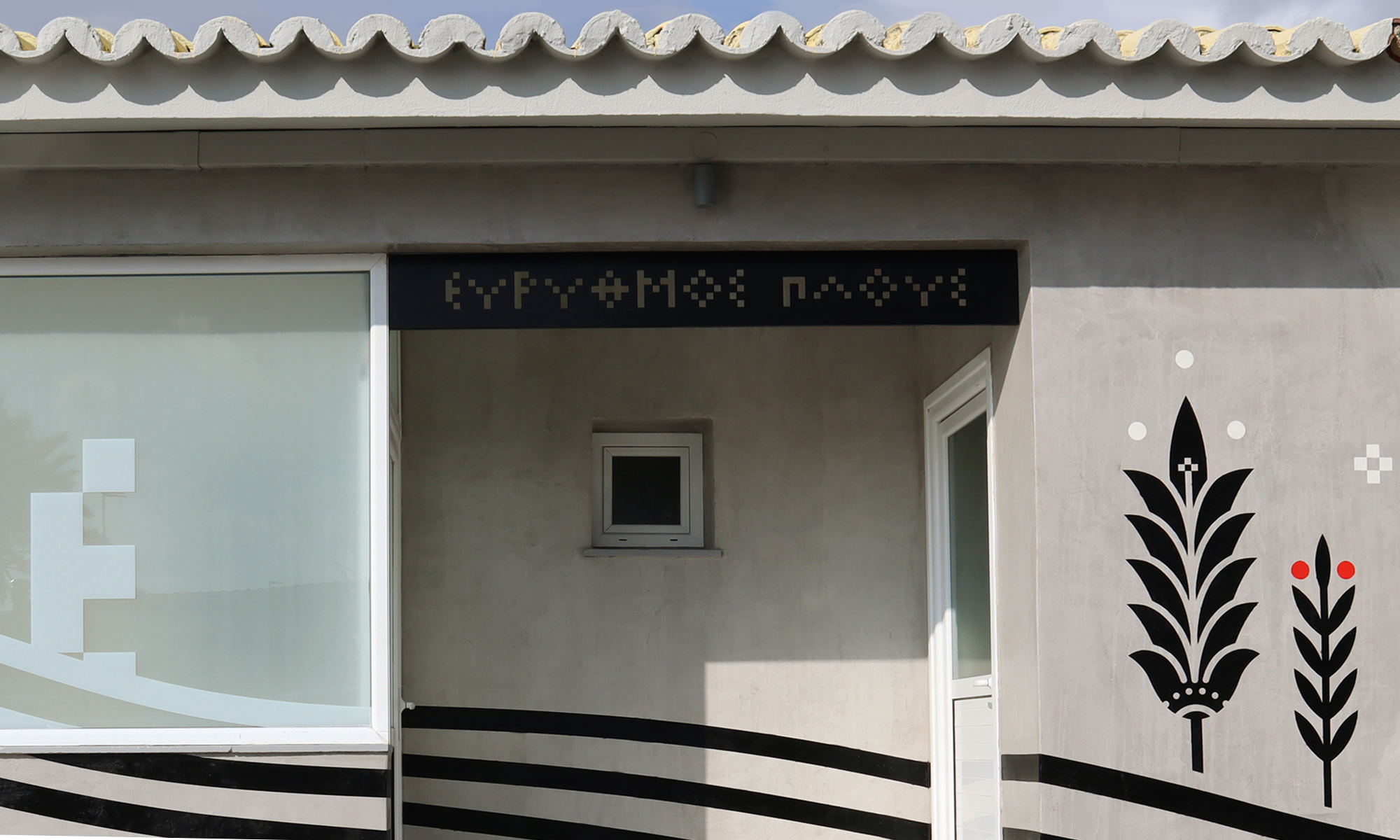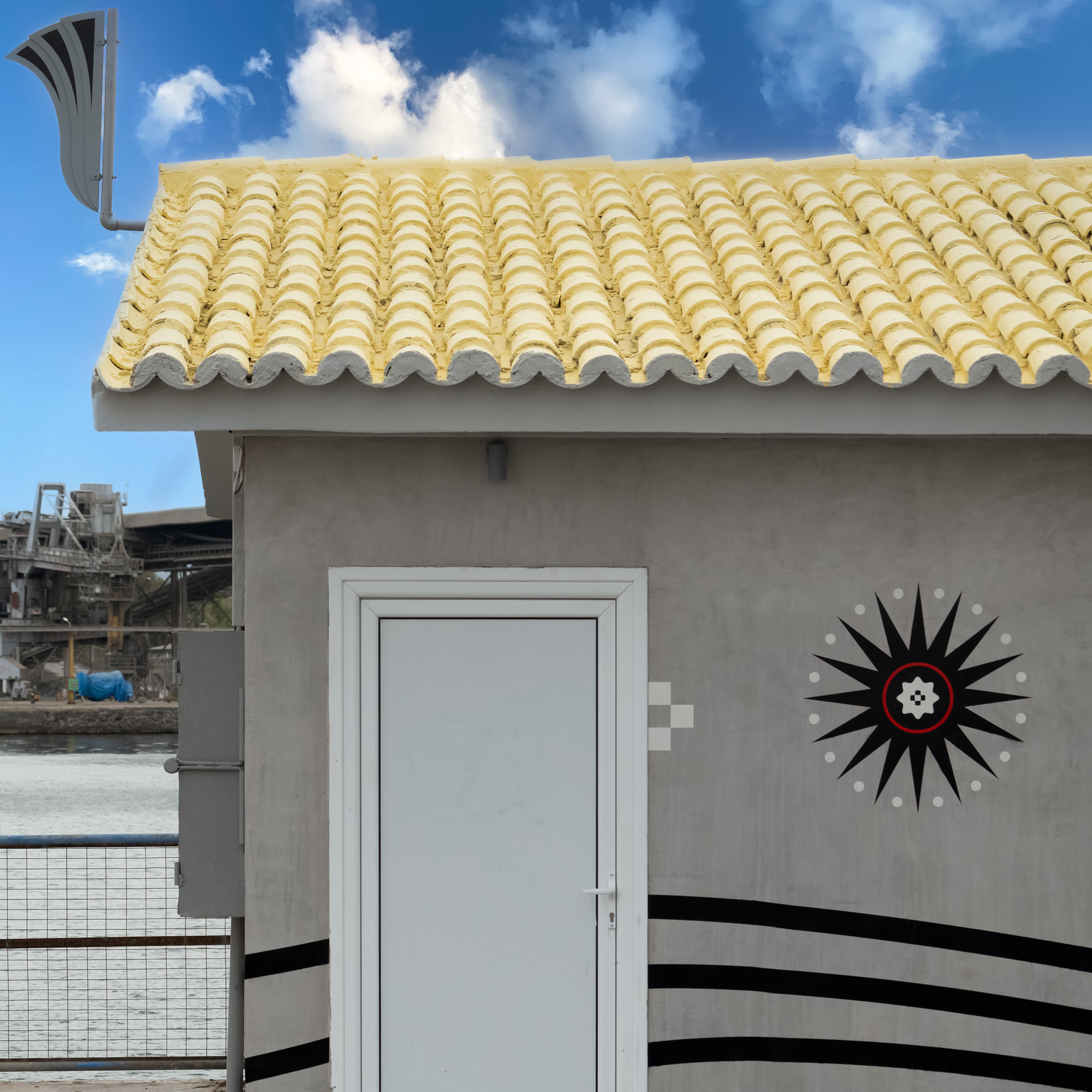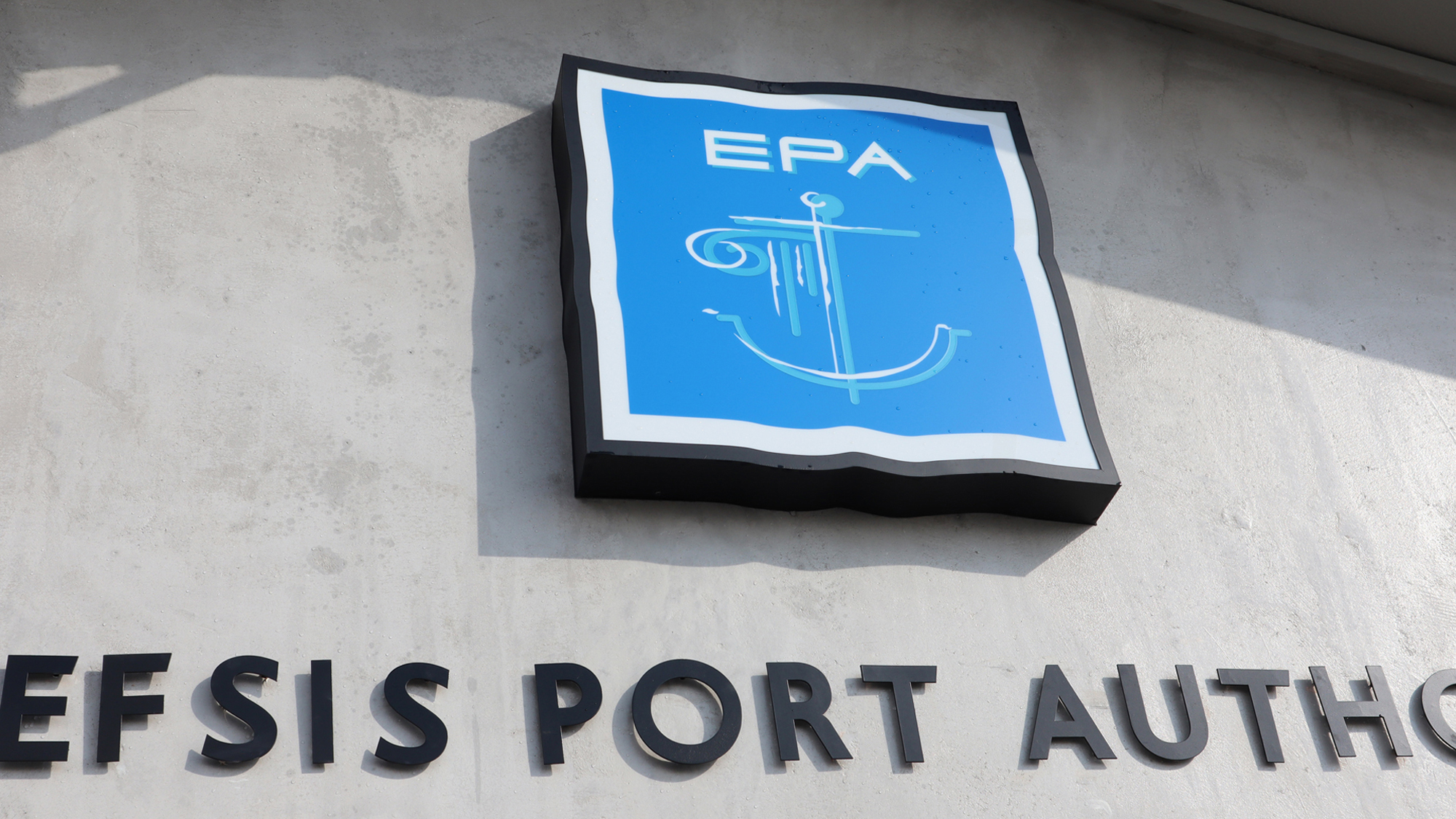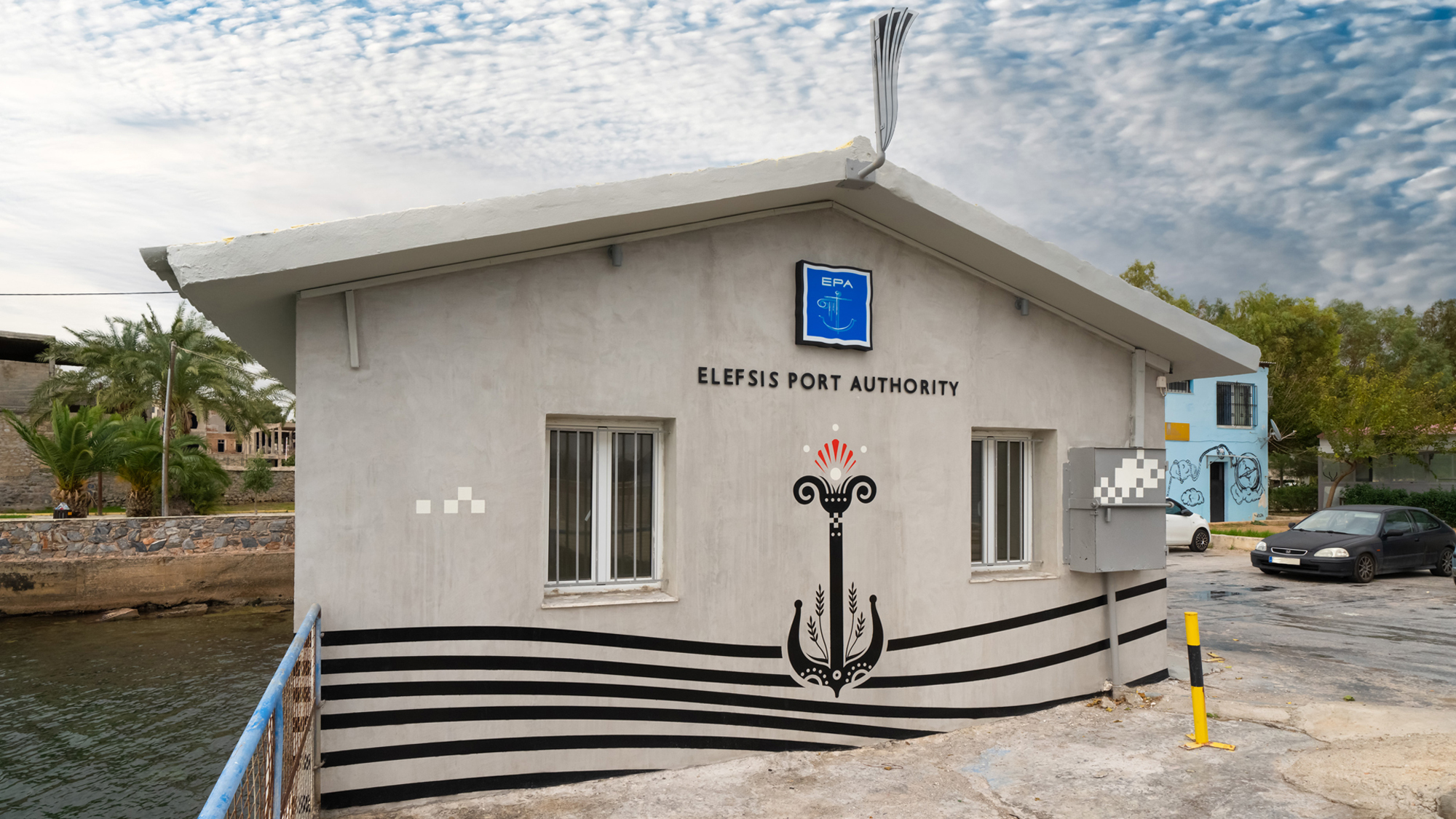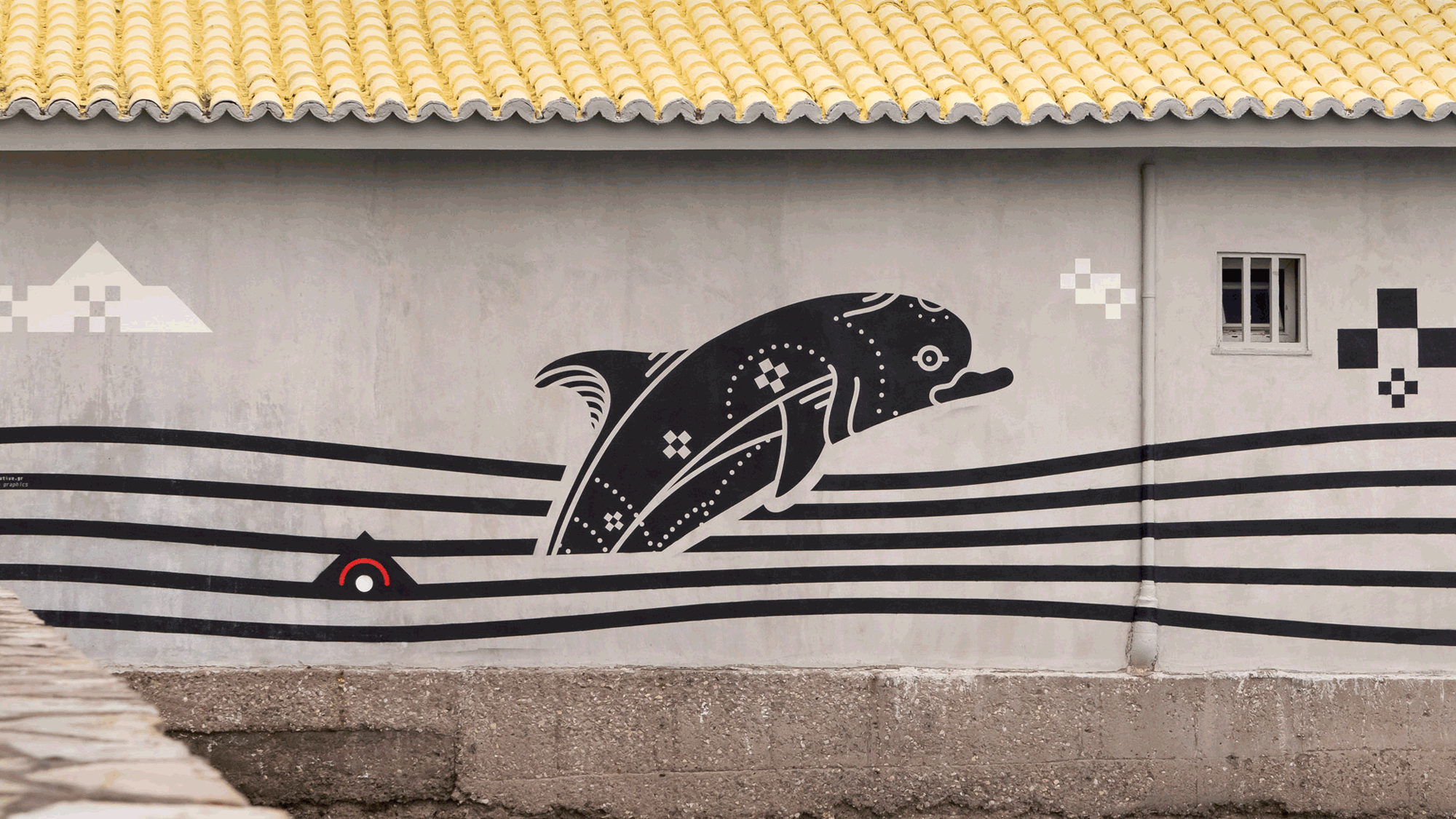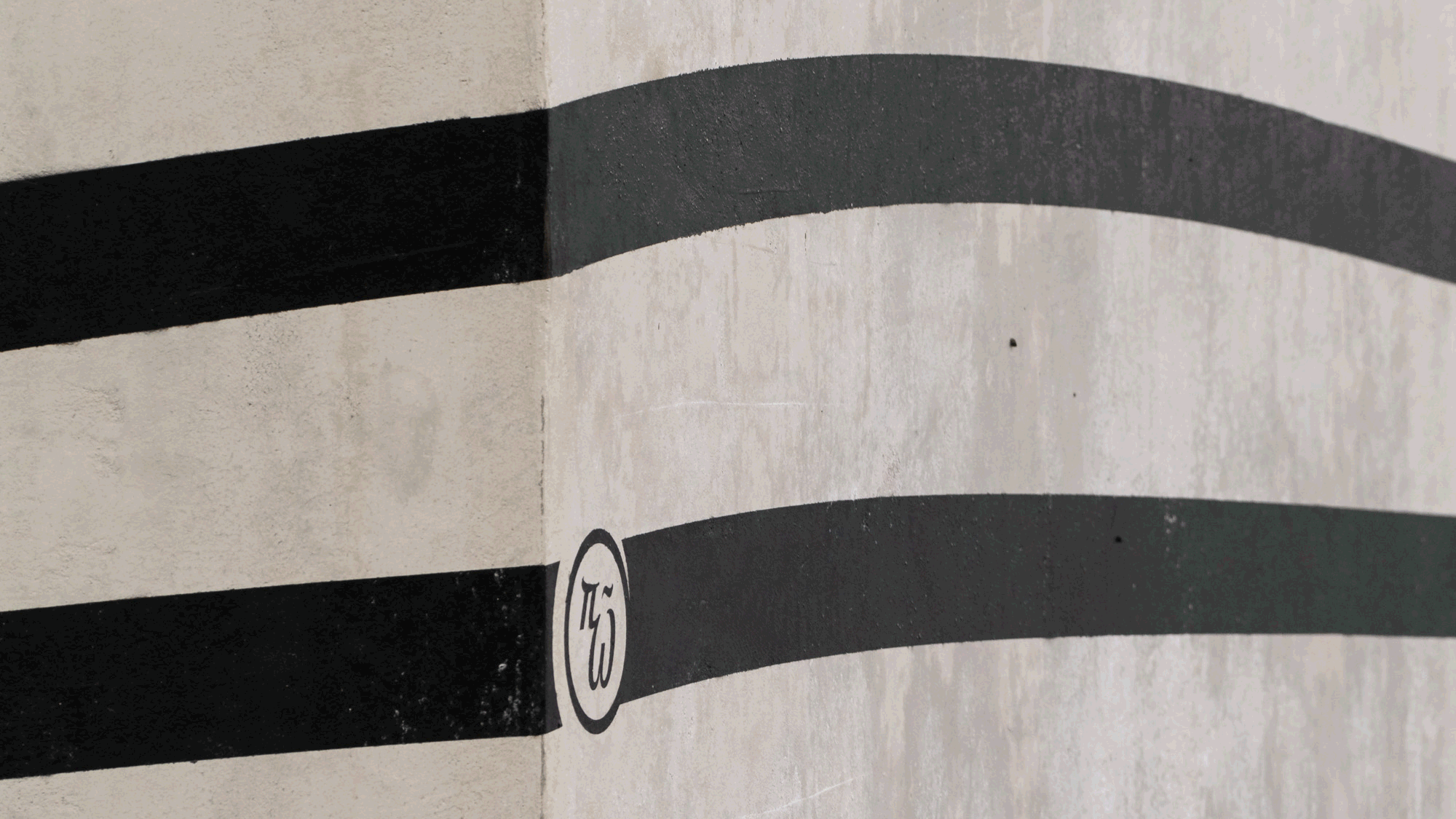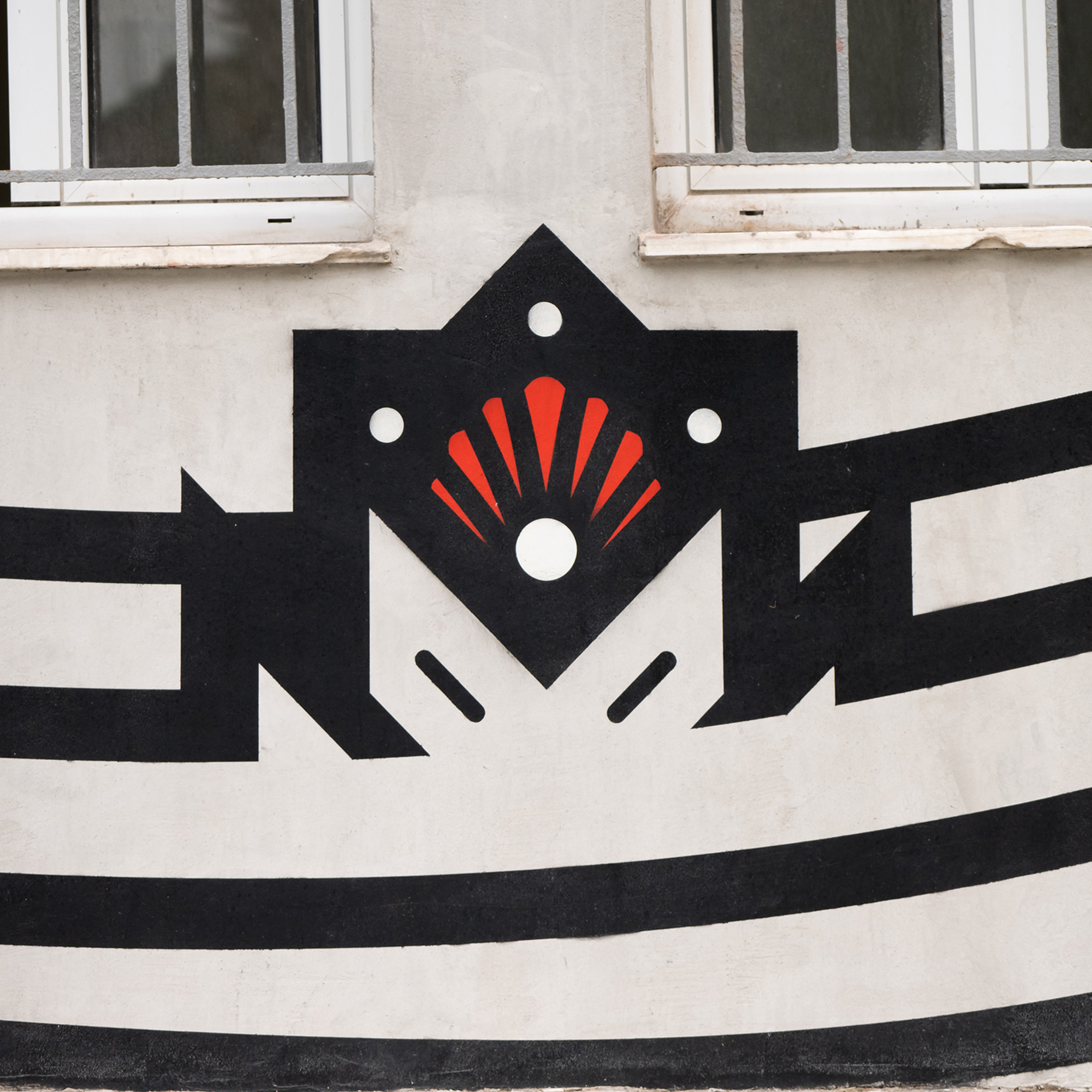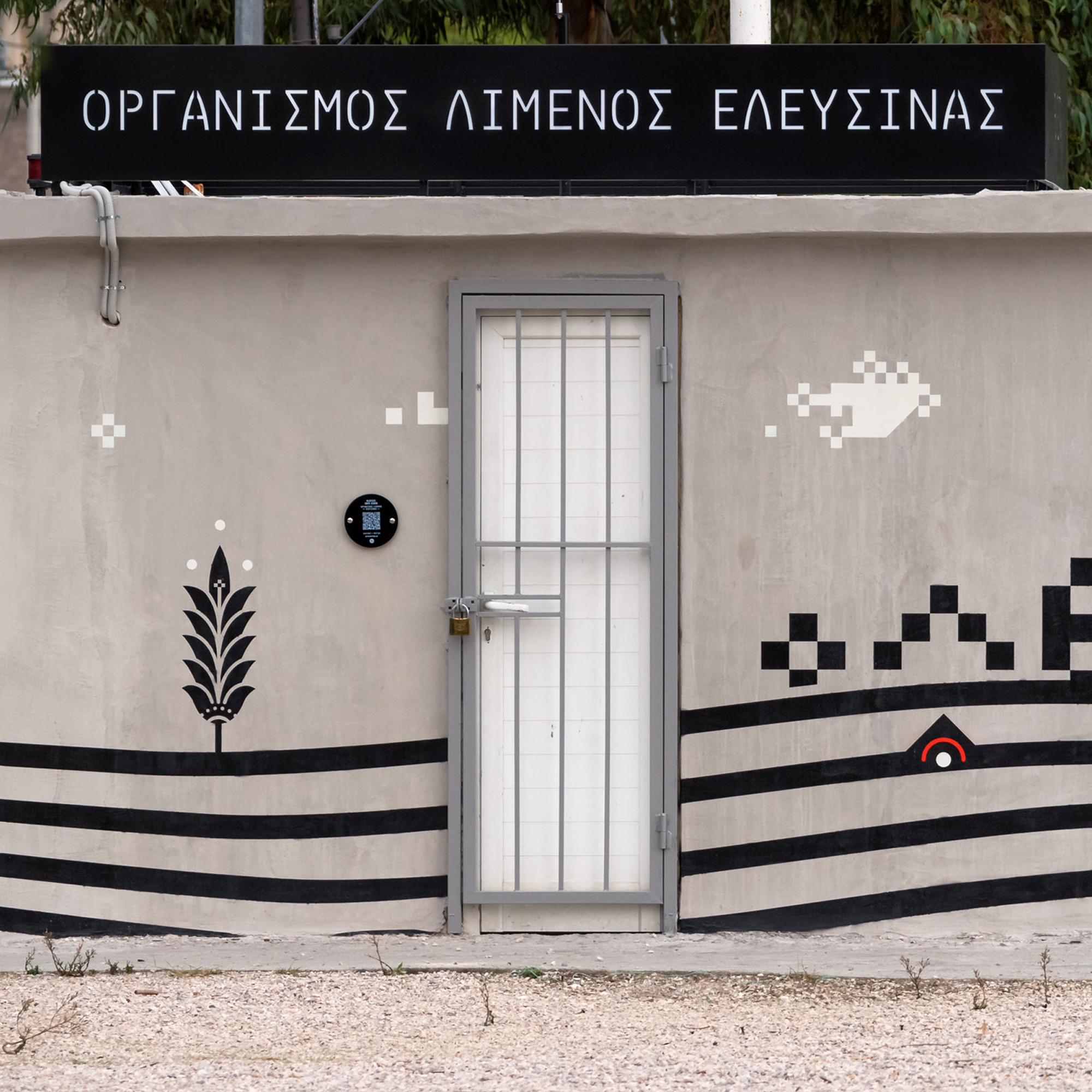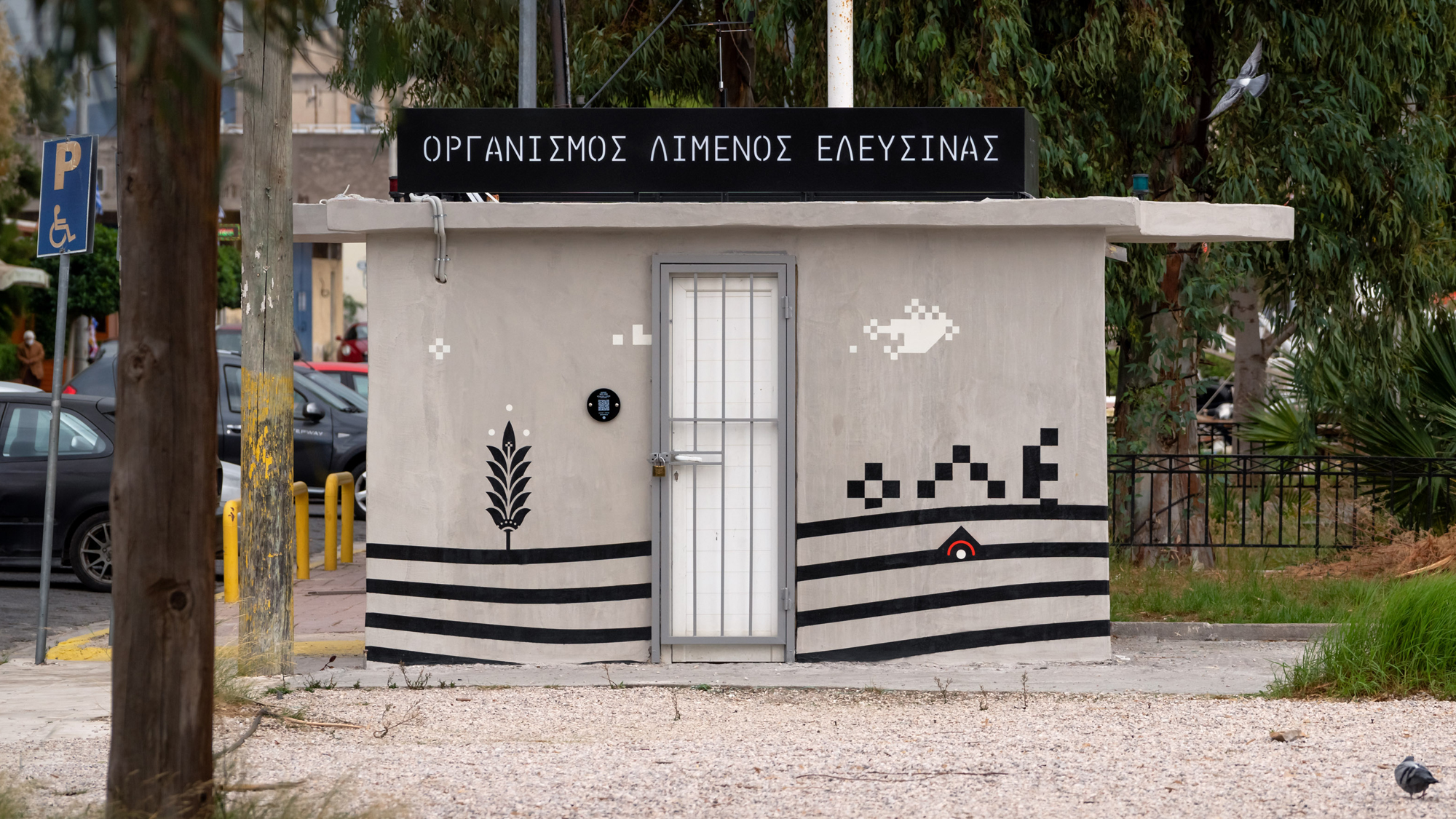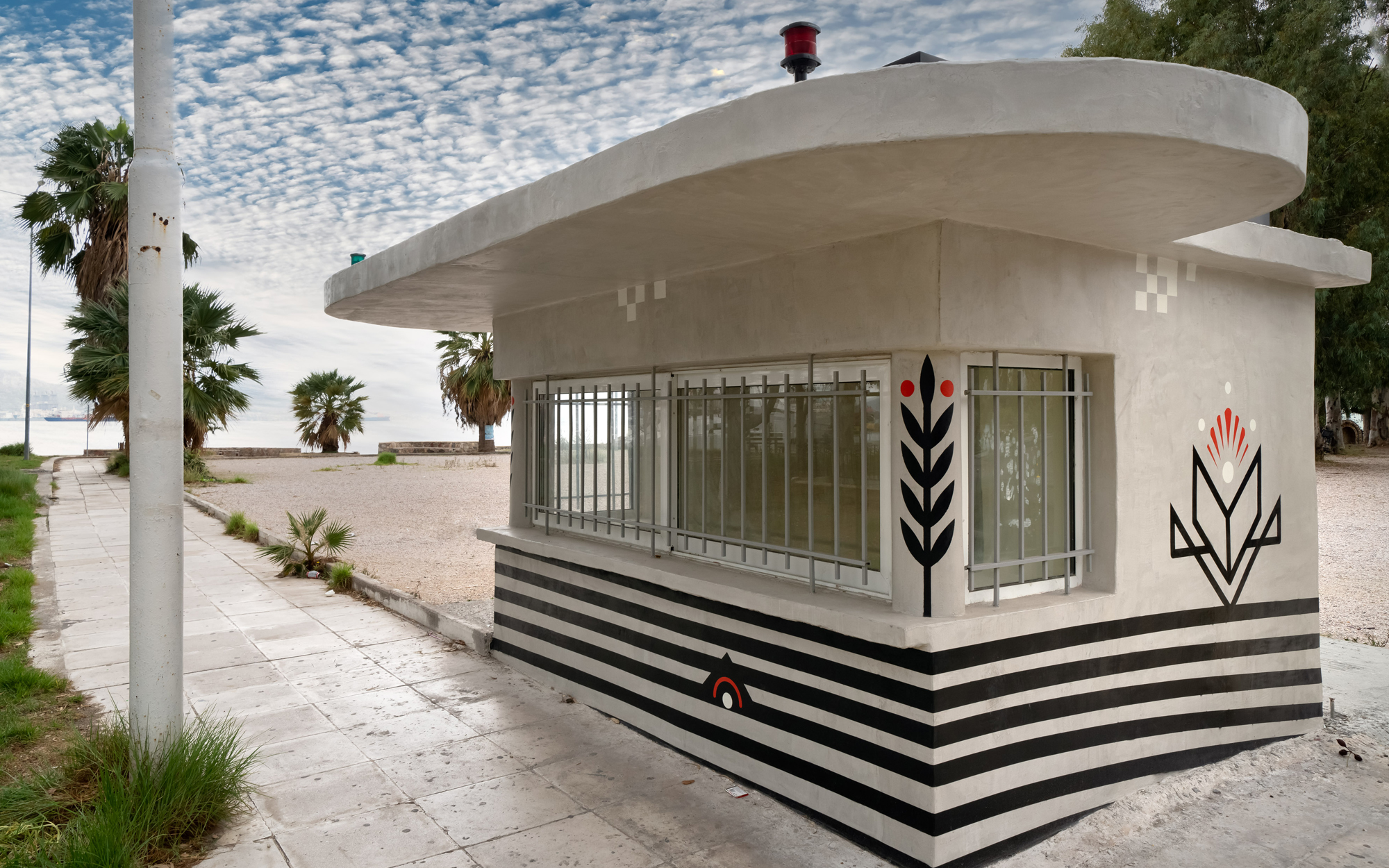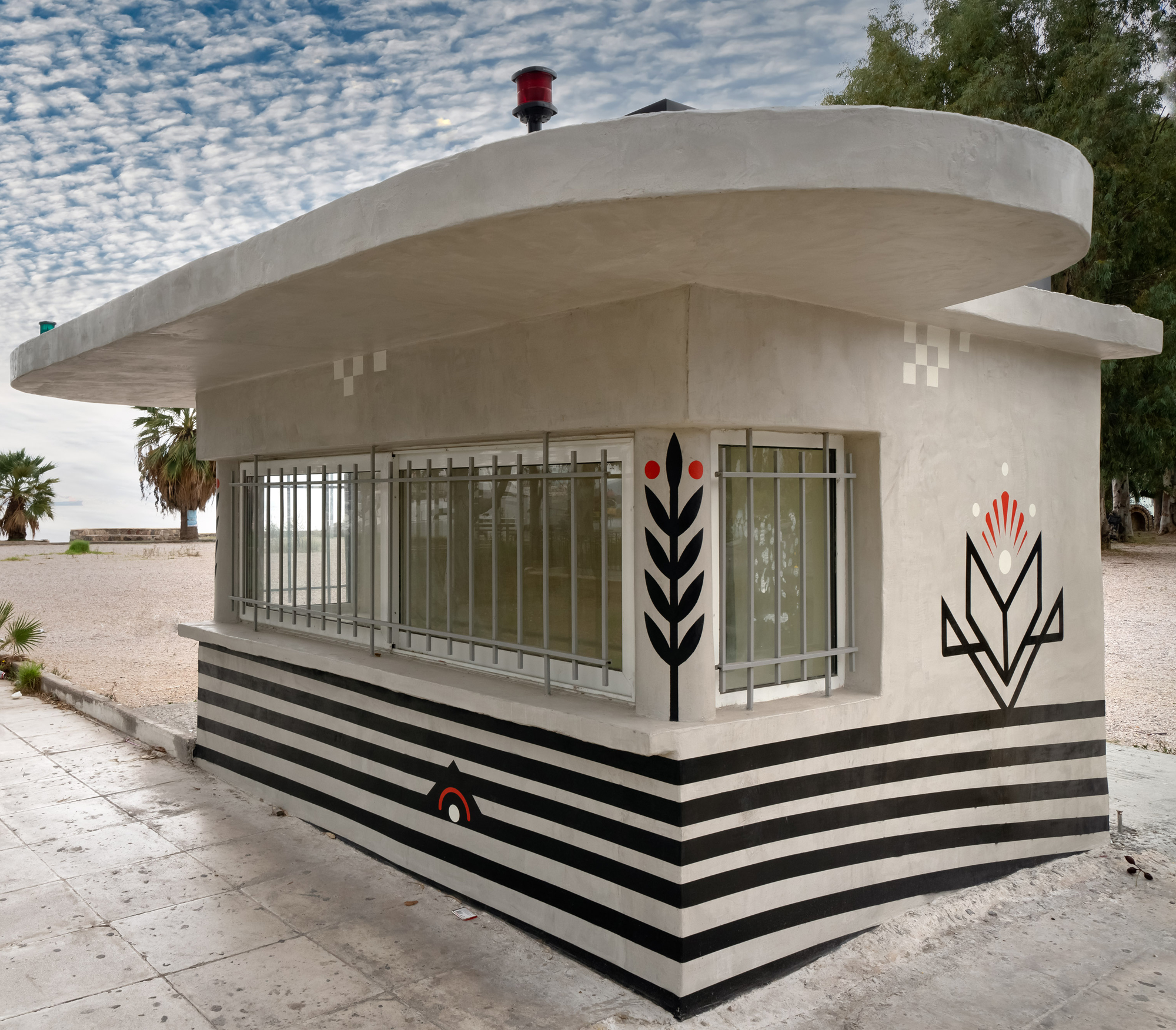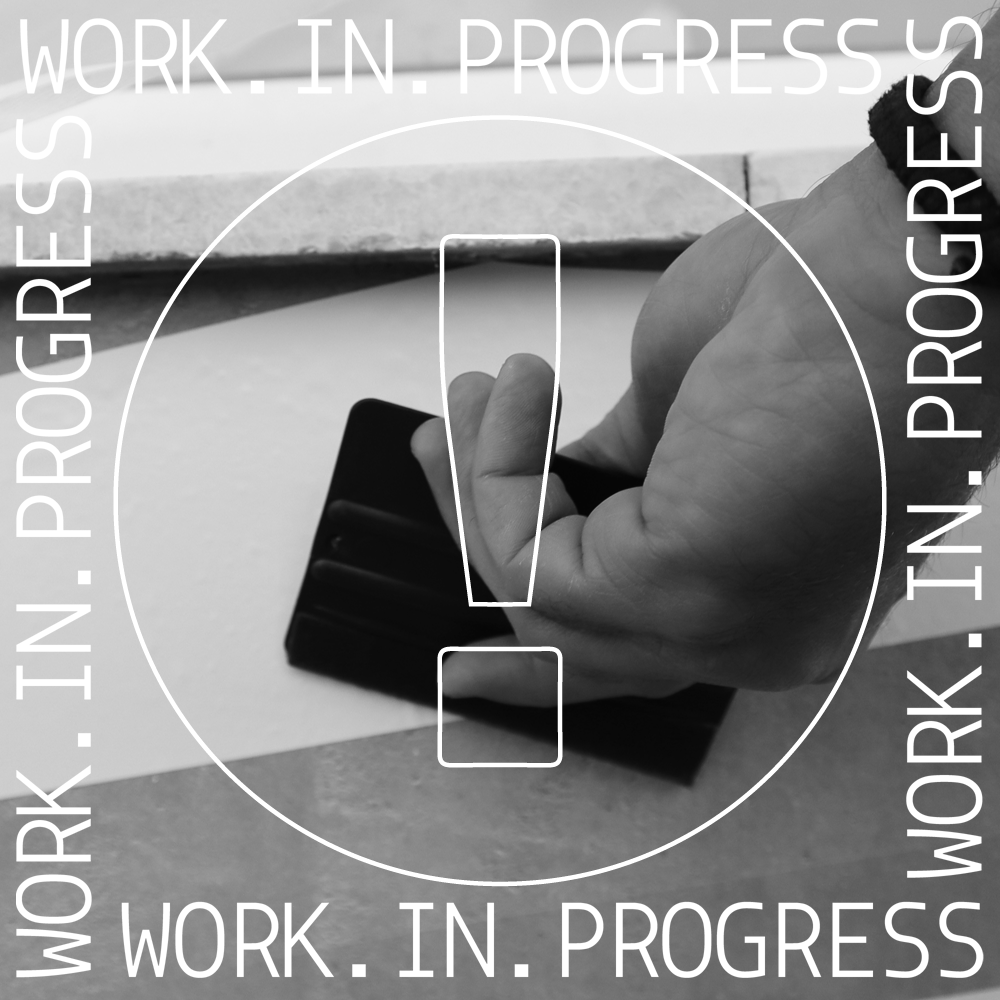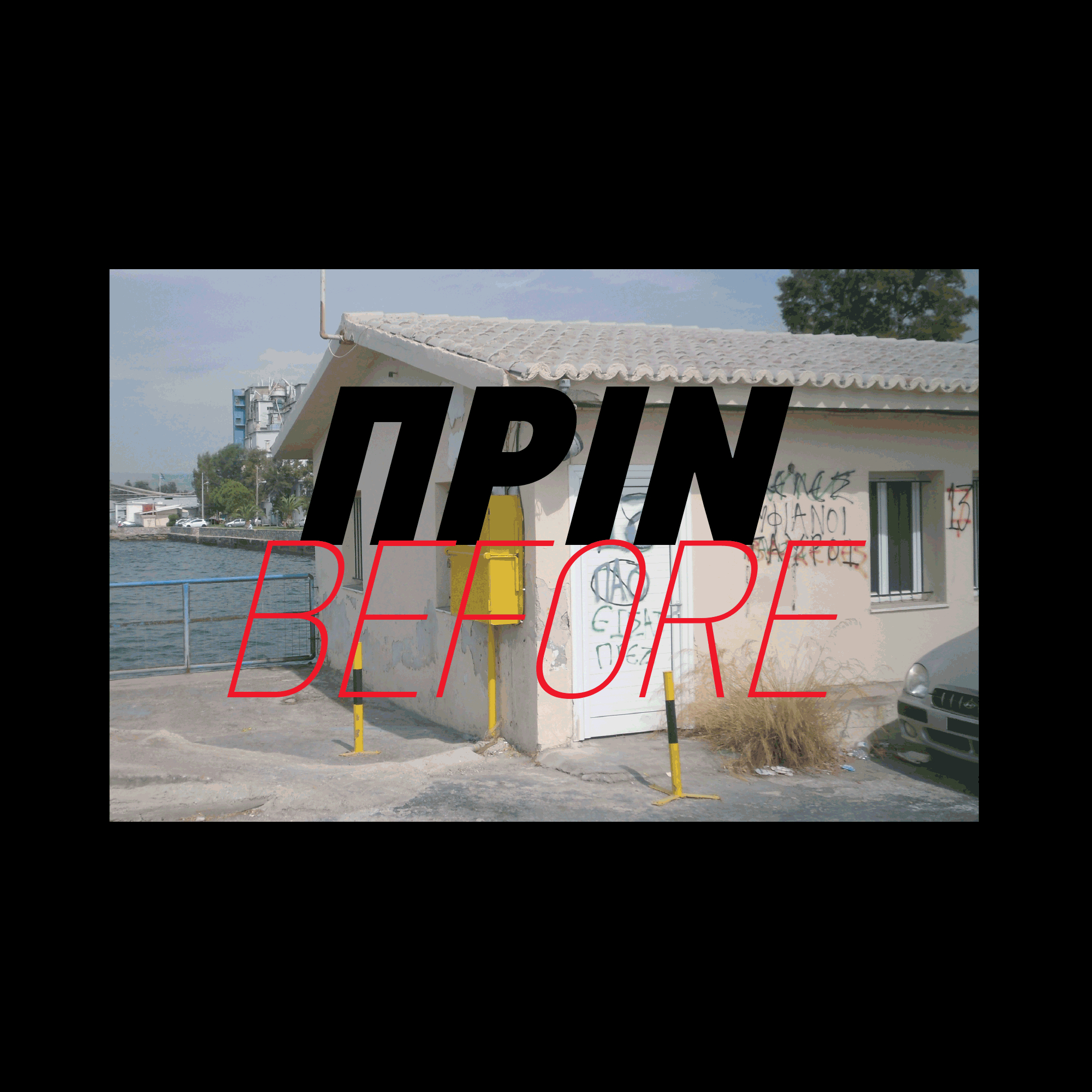ARTISTIC REMODELING OF TWO BUILDINGS OF THE E.P.A ON THE COASTAL FRONT OF THE CITY
Visual remodeling of the building located at the entrance to the pier of the former American Base & a historic stone kiosk in the coastal zone of Elefsina within the framework of the “Elefsina – European Capital of Culture 2021-2023” program. The goal was to highlight the buildings as landmarks of the city’s coastal front, giving a specific and unified artistic identity, in which the long-standing heritage of the Elefsina Port Authority and the history of the place with an eye to the past, present & future are condensed.
The dominant element, which like a thread unifies the mural composition, is the sea. In a rhythmic way it surrounds the base of the buildings, referring to a musical staff from which the flowers of the sea emerge like modern anthemia of the seabed. The visual narrative is complemented by the dolphin, a symbol of navigation and naval power since antiquity; the swallow as a symbol of the arrival of Spring (reference to the myth of Persephone and the change of seasons) but also as a symbol of the maritime experience and the safe return to the port; the ear of corn, a sacred symbol of the goddess Demeter; the sun-compass, which gives the orientation, and the fish-like anchor with its shank-tail ending in a calyx with anthemion, symbolizing the anchorage for each ship in the port of Eleusis. From the navigation lamps at sea, which like notes on a staff give the rhythm in the course of the ship, arose the phrase “eurythmos plous” (rhythmical seaway), which has now been adopted by the E.P.A. as its motto. The illustration of the landscape is completed with the clouds designed in pixels –structural elements of our digital age– with a parallel reference to the traditional Greek embroidery art. For the overall aesthetic of the mural composition we have been inspired by the art of black- and red-figure pottery.
All the murals were executed with the stencil technique. In the completion of the concept, an effort was made to highlight the particularities of each building. Viewing the pavilion as a trawler cabin, a wind vane and navigation lights were placed on the roof, while on the wharf building, treating it like a ship’s hull, the stern was marked with an additional metal and painted element, which evokes a horn-trumpet (bican). The necessary markings – inscriptions – were placed on the buildings.
Photoshooting: pikon.gr
